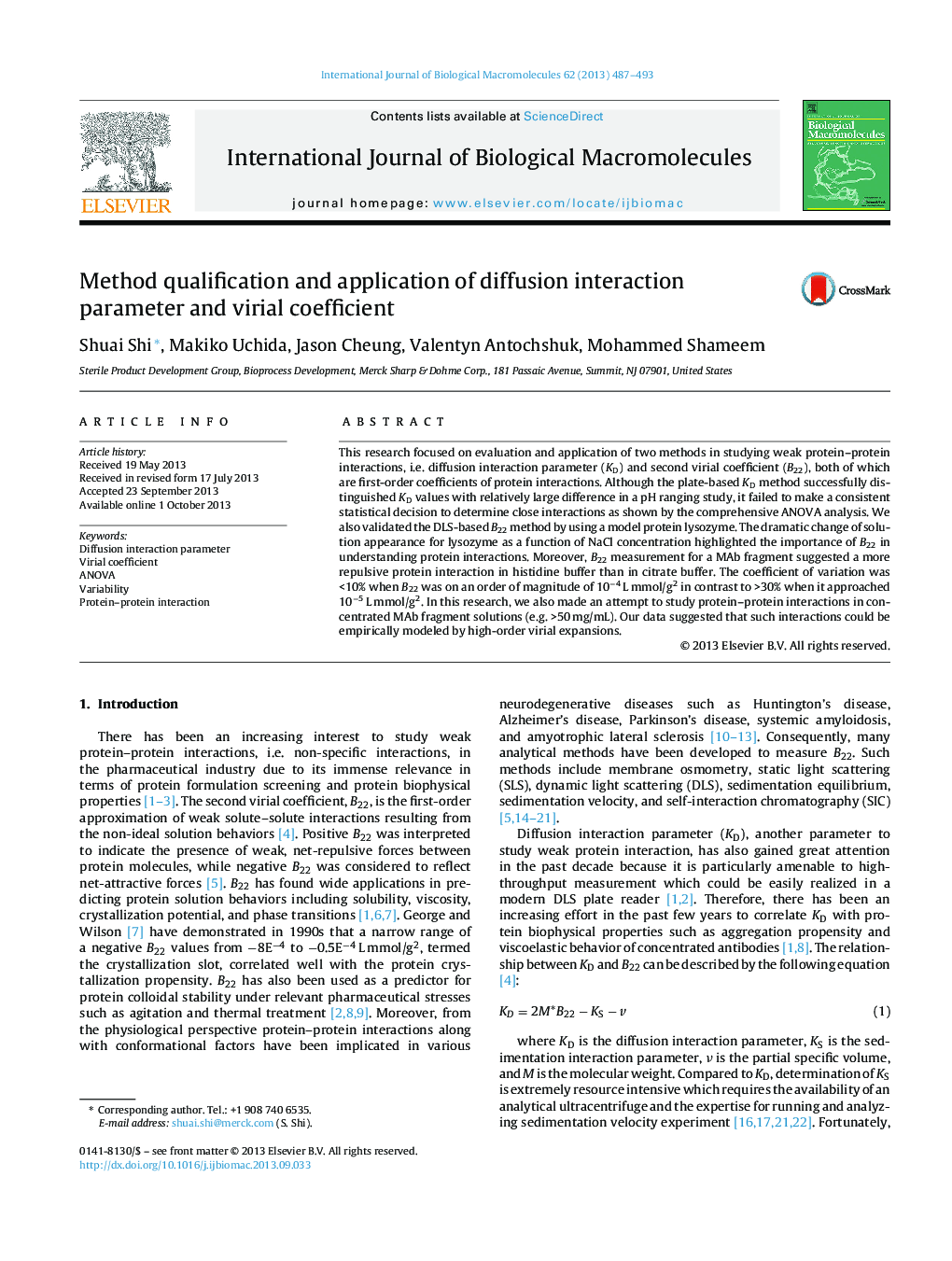| Article ID | Journal | Published Year | Pages | File Type |
|---|---|---|---|---|
| 1986942 | International Journal of Biological Macromolecules | 2013 | 7 Pages |
This research focused on evaluation and application of two methods in studying weak protein–protein interactions, i.e. diffusion interaction parameter (KD) and second virial coefficient (B22), both of which are first-order coefficients of protein interactions. Although the plate-based KD method successfully distinguished KD values with relatively large difference in a pH ranging study, it failed to make a consistent statistical decision to determine close interactions as shown by the comprehensive ANOVA analysis. We also validated the DLS-based B22 method by using a model protein lysozyme. The dramatic change of solution appearance for lysozyme as a function of NaCl concentration highlighted the importance of B22 in understanding protein interactions. Moreover, B22 measurement for a MAb fragment suggested a more repulsive protein interaction in histidine buffer than in citrate buffer. The coefficient of variation was <10% when B22 was on an order of magnitude of 10−4 L mmol/g2 in contrast to >30% when it approached 10−5 L mmol/g2. In this research, we also made an attempt to study protein–protein interactions in concentrated MAb fragment solutions (e.g. >50 mg/mL). Our data suggested that such interactions could be empirically modeled by high-order virial expansions.
